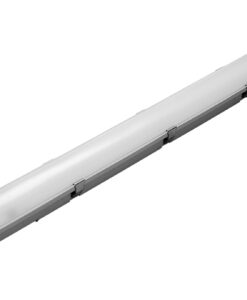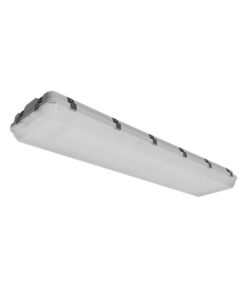The term “vapor proof” is frequently used when describing a light fixture in the industrial lighting sector. But what does vapor proof include, and why is it important to consider it while looking for light fixtures for a certain use?
Vapor is defined as diffused matter suspended in the air and impairing its transparency or as a substance in the gaseous state as opposed to the solid or liquid state; a substance such as gasoline, mercury, benzoin, or alcohol vaporized for industrial, therapeutic, or military uses; or a mixture such as the explosive mixture in internal combustion engines.
Examples where vapor proof light fixture is used:
- Laundry facilities
- Sports facilities
- Food processing plants
- transportation hubs
- Parking
- Chemical processing plants
- commercial kitchens
- Garages,
- Subways
- Riding areas
- Tunnels
- Barns
- Automotive repair shops
- Construction sites
Ratings for Vapor Proof
Because each lamp or lighting fixture has a rating, you can quickly determine if it is vapor-proof. Vapor-proof ratings come in various forms, including IP65, IP66, and IP67. Fixtures receive each of these ratings after successfully passing a certain test.
For instance, the IP65 classification mandates that a fixture withstands water blasted from any direction by a 0.25-inch nozzle. The test must be performed at a distance of three yards for 15 minutes at a water flow rate of 3.3 gallons per minute and a pressure of 30 kPa.
A fixture must withstand water spraying from strong jets through a 0.50-inch nozzle coming from any direction to be classified IP66 certified. A minimum of three minutes must pass during the test, which must be performed with a flow of 26.4 gallons of water per minute at a pressure of 100 kPa at a distance of three yards.
When a fixture is completely submerged in water, it must not let the entry of dangerous amounts of water for it be IP67 rated. At least 5.9 inches of water must be present above the fixture’s top for the entire test duration, which must be performed at a minimum immersion depth of one meter.
Vapor-Proof Lamps And Lighting
For certain uses, such as outdoor lighting where the lamp socket and its wiring are shielded from rain, moisture, non-combustible dust, corrosive fumes, and non-explosive vapors and ‘gasses’, vapor proof fixtures often have tough die-cast housings.
Vapor-proof lighting is frequently used in industrial or commercial settings and other locations where there may be moisture and dirt. Vapor-resistant lights come with various lamp types, including LEDs, and can be used indoors and outside.




Disclaimer: PacLights is not responsible for any actions taken based on the suggestions and information provided in this article, and readers should consult local building and electrical codes for proper guidance.